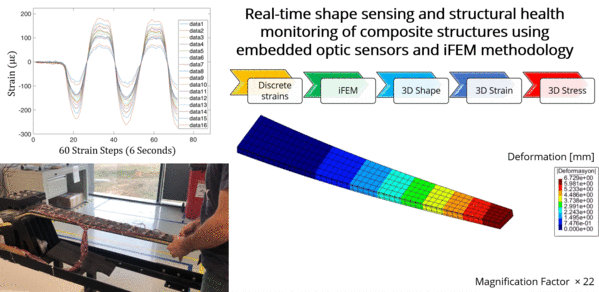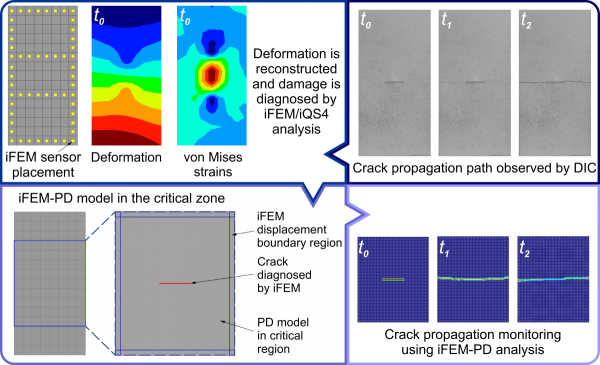
|
Real-Time Shape Sensing and Structural Health Monitoring of Composite Structures
Most recently, we have also introduced coupling of iFEM and peridynamics (PD) for real-time shape sensing and crack propagation monitoring of laminates. As shown in Figure 2, the hybrid iFEM-PD method can account for deformation, stress, and damage states of any sensor-equipped (e.g., FBG sensors) structure in real time without the need for loading knowledge.
|
- Education
- Research
- Research Areas
- Advanced Mechanics of Composite Structures
- Automotive Systems
- Biomechatronics
- Biomedical Applications
- Design of Mechatronic Systems
- Dynamics and Vibration
- Energy Systems
- Experimental and Computational Micro/Nano Fluidics and Heat Transfer
- Real-Time Imaging and Machine Vision Systems
- Robotics, Systems and Controls
- Shape Sensing and Structural Health Monitoring
- Tissue Engineering
- Topology Optimization of Materials and Structures
- Labs & Research Groups
- Publications
- Projects
- Research Videos
- Research Areas
- People
- Information
- Contact
-



